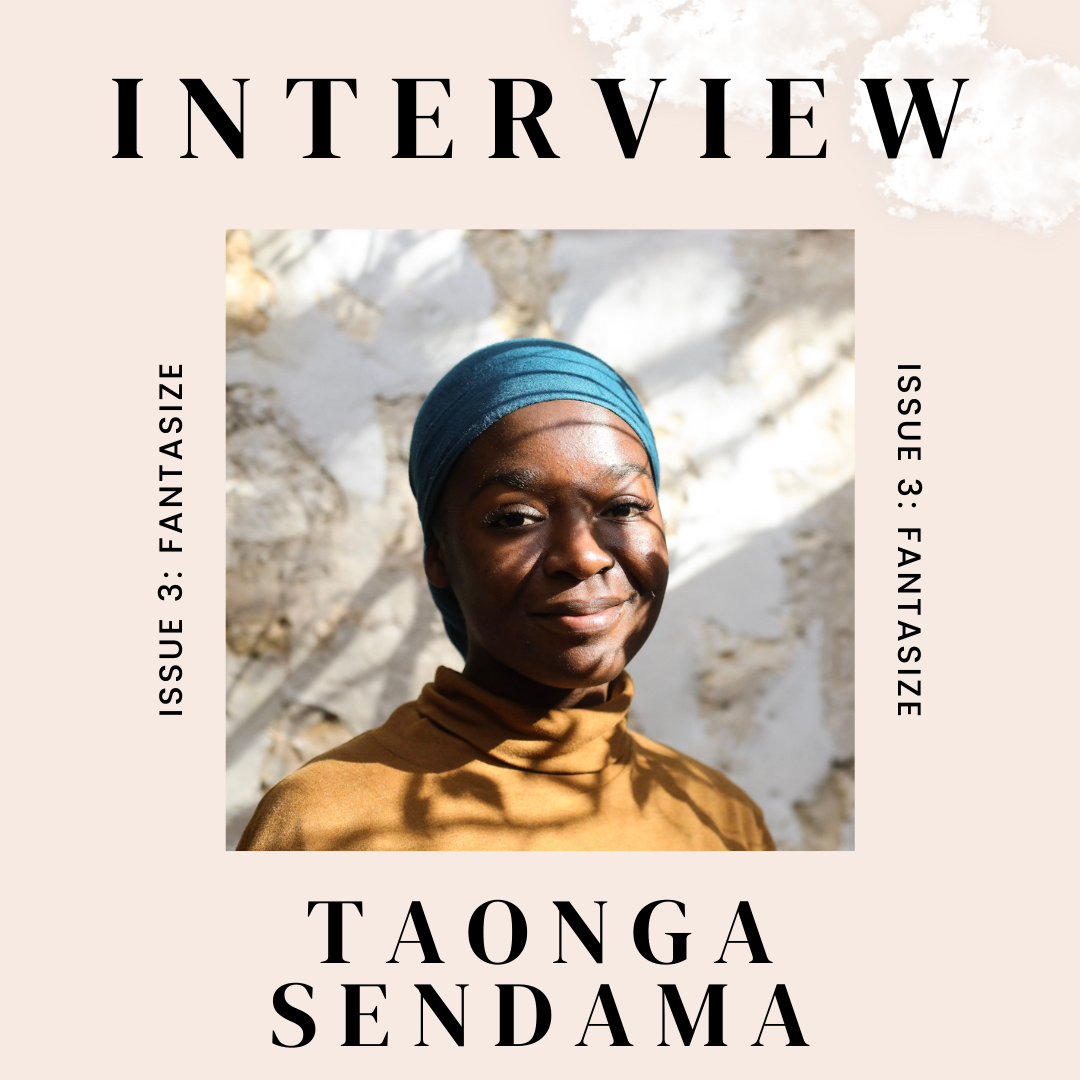Issue 3: Interview with Taonga Sendama
“I am imagining a future in which we do not die;
Instead, we are eulogised in the dance circle
nestled between the first and second beat.”
~ Future, reimagined by Taonga Sendama
Your poem “Future, reimagined” imagines a Black, safe future of equality and joy. Can you tell us what sparked the inspiration for this piece?
This poem was created during a workshop I co-facilitated for Soul Alphabet centred on reimagining the future. Since the very beginning of my writing journey, Soul Alphabet has consistently made me feel held and seen and created spaces I truly felt my safest self in. This workshop took place in July 2020, during the resurgence of the Black Lives Matter movement; it was difficult to imagine the future outside of our collective pain, existing freely away from brutality and violence. But amidst my grief I still found moments of healing – all my friends’ smiles were healing, I hugged my friends tighter, I told my online friends I loved them, I danced in my bedroom more often, I sat still, I found comfort in solidarity and in community. To me, this is what I wanted the future to be. Black joy, and an abundance of it. A space for Black people existing at all intersections of life, a space for Black love to thrive. I wrote this poem as a mantra for myself and the people around me and as an affirmation to remind me what I was working towards.
You are also a spoken word poet and multimedia storyteller. What do you enjoy about these different modes of storytelling and expression?
Despite my anxiety before every performance, I love the freedom spoken word gives me in telling my story. I live for the control of cadence and flow of my work and how when spoken, it evolves into something new. I write poems specifically for the stage and poems specifically for paper, some exist in both spaces (such as this one). Although I’ve read my own work dozens of times over, I still can find myself tearing up on stages while reciting work and reliving the memories that helped create each piece. Spoken word opens up a new realm of vulnerability between myself and the audience, as do the rest of my multimedia projects. Most of my shoots are born from journal extracts or excerpts of poems whose existence makes more sense in a series of photos or videos than in a full poem. My photo projects allow me to be witnessed in my vulnerability and I find they have less of the impersonal barrier that page poetry grants.
What creative projects are you currently working on?
Right now I’m sitting on multiple multimedia projects I haven’t found funding or time for, but my main focus is rebuilding my relationship with myself and my writing. I’m currently residing at Centre For Stories creating new work, editing life into old work, and engaging with other writers. I’ve learnt in the last two years that some good ideas take time and there’s no rush to push myself to create for the sake of maintaining relevance. For now, I plan on taking things slow and showing myself kindness by allowing myself to rest, but also holding myself accountable when I find myself slipping into complacency or back into my comfort zones.
Who are some great writers or poets whose work you always return to?
Hanif Abdurraqib Willis and Ocean Vuong will forever have my heart in their hands, as will Yrsa Daley Ward, Gwendolyn Brooks and Yusuf Komunyaaka. This year I’ve also fallen in love with Logan February and Evelyn Araluen and have been constantly rereading their published works at whatever chance I get.
Taonga is a poet, multimedia storyteller and workshop coordinator whose work centres on vulnerability and intersections of identity. Through her art she aims to build community connections through collaborations with artists and provide a space of healing and familiarity for others.
